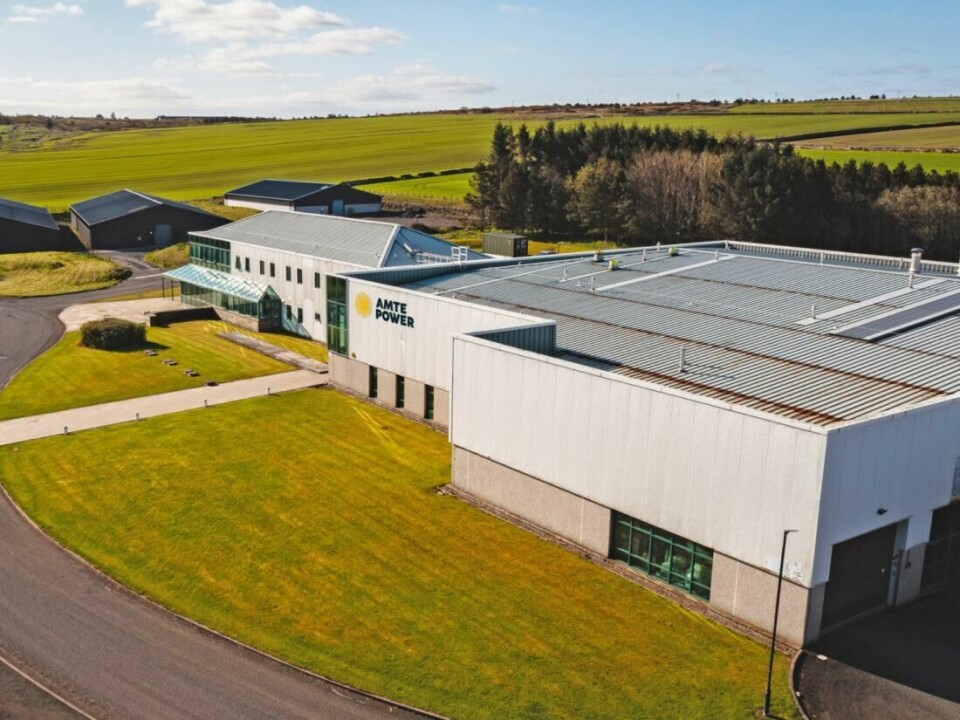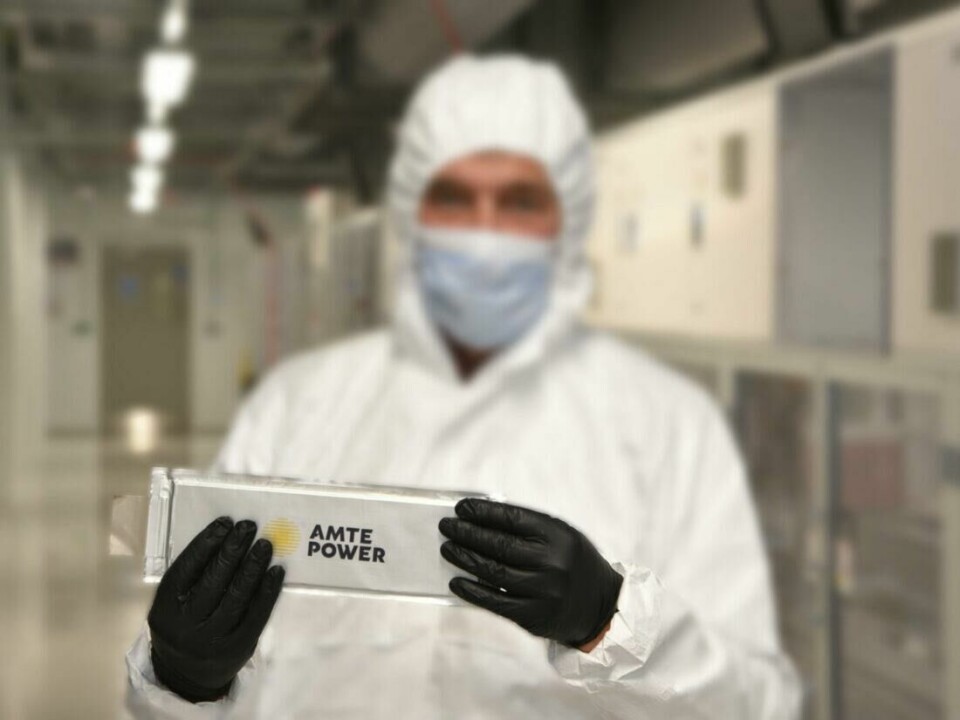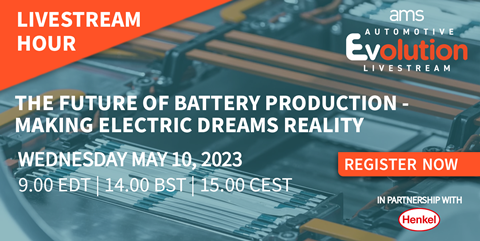
Powering up: AMTE ramps up cell production volume
AMTE CEO Alan Hollis discusses ramping up cell production, establishing a new Gigafactory and developing a flexible, sustainable manufacturing approach
AMTE has made several announcements recently around its development of production operations such as the expansion at Thurso, the co-operation with the UK Battery Industrialisation Centre (UKBIC) and the planned Gigafactory at Dundee. Could you offer some insights into these expansions regarding timelines, scale and scope?

Alan Hollis: AMTE has had a production facility at Thurso in Scotland for 20+ years. Originally, we made D cells for the Ministry of Defence, and then it moved into R&D, very small batch manufacture. As AMTE’s strategy has grown and developed, we have focused on developing three core products: the Ultra High Power product for the automotive market; the Ultra Safe product, sodium-ion technology for the static energy storage market; and then we’ve got the Prime Cell, which is the non-rechargeable cell.
We’re now at the stage where we need to be ramping up our production and move from being a small-batch technology manufacturer to a relatively high-volume (eight to 10m cells a year) manufacturer and developing our first Gigafactory at our preferred site in Dundee. Therefore, there’s a lot of focus within the organisation about how you do that and what are the steps that you need to go through.
It’s a multi-staged process of which step one is to ramp up production capability at Thurso, to produce small numbers (in the region of thousands of cells per month) of the Ultra Safe, and similar numbers of the Prime Cell in the first instance. And that’s going to involve a mixture of capital investment, but also manufacturing operational excellence skills and techniques being deployed throughout the facility so that we can start to develop the process capability and reproducibility that you need when you’re producing several thousand pieces a week.
At the same time, we have a similar challenge with the Ultra High Power (UHP) product. We recognise there isn’t sufficient capacity at Thurso to be able to produce all three products at the same time. So, we have this production and supply agreement with UKBIC, which is where we’ve started to manufacture the UHP product, at a small-step scale now, but the next step is to start to manufacture around 60,000 cells a year.
It’s a really important facility for the UK because it not only allows us to manufacture a product that we can put in the hands of our customers, to be part of that overall commercialisation process, it also allows us to learn how to manufacture the product on Gigafactory scale. So, while we’re developing Thurso, and using the UKBIC for interim production quantities, we’re also planning for and developing the Gigafactory, which will be approximately a gigawatt-hour of capacity. We are in the process of getting all the quotes finalised for the equipment, scoping out exactly what we need, getting the layout drawings for the facility, looking at process flow and all the assets you need to do to build and develop a Gigafactory. That’s a three-year programme that we’re now working on.
The three-year programme, is that across all those projects or are some at a more advanced stage?
AH: Because we’re serving different market sectors, the rate of ramp up of product is going to be different in all three sectors. The energy storage market is potentially the shortest timescale, so that’s why we’re looking to really ramp up or maximise the capacity availability on that. We already have a development and supply agreement for the non-rechargeable cell, and we’ve got forecast volumes from our customer on that. To get to reasonable volumes, say 20,000 cells a quarter, we’re looking for that in probably mid-’25. By the time we get to, say, 2025 we will be at a stage where we’re producing good volumes out of Thurso, and we’re producing the 60,000 cells a year at the UKBIC.
The obvious thing is, it’s all about demand. We’ve got the development and supply agreement for our non-rechargeable cell, so we’re confident about that. The timescale to winning significant orders from customers for energy storage is a lot less than it is for automotive, because with automotive everybody knows it’s a long timescale, but the payoff is you get those very lengthy contracts at the end of it.
Automotive is important to us, but if I was to rank the sales in terms of the volumes that we see being generated over time, I’d put the energy storage first, then the non-rechargeable cell – the specialist markets – and then automotive. Just purely and simply because of matching the customer requirements to customer platforms and the whole automotive buying and the quality process you must go through.
That’s what is dictating the pace, as well as of course the long lead times for equipment. When you’re building a Gigafactory the equipment can be on 18 months to two years lead times from placing orders to actually getting it installed in a facility. So, we’ve got to be pragmatic about what the timescales are, and that’s what we’re working to.
You mentioned CapEx spend at Thurso as well as process improvements. Does that mean you’re physically expanding the site at Thurso? Are you adding in extra production sites or facilities there?
AH: I can’t confirm any plans at this stage. What I will say is that we’re exploring all options. Thurso is constrained as a site, but there are options for us to be able to look at the layout of the facility and to lay it out far more efficiently and effectively, to be able to put some new plant and equipment in, a new dry room, for example, so that we can expand the capacity within the constraints of the existing facility.
You noted that it’s a challenge to set up a Gigafactory. What kind of external resources are needed to support establishment and expansion of production?
AH: There are many different things consider. You do have to consider the logistics, sourcing and transporting the hundreds of tons of raw material a month in a cost-effective and sustainable way, so you’re minimising the carbon footprint of what you’re doing. That is a significant challenge.
You then do have to look at the energy requirements for producing on the site where you’re located. We know making batteries requires a lot of energy, so it’s vital that we can access a renewable energy supply.
If we look at our preferred Gigafactory site in Dundee, although it’s not a done deal yet, there’s an existing building there so you don’t have to build a new facility. Dundee has also got the ability to supply all the electricity from renewable sources and offers a logistics chain via the nearby seaport.

Then finally, people. I think all Gigafactory plants are going to suffer from this, and it is a key consideration, you must make sure you’re putting your facility in an area where there’s access to potential employees who have got the right skill sets and the right experience. You’ve got to have that infrastructure in place to train and develop the team, as well as having a pool of employees that you can start the business off with, and then can start to train-up people, further employees as you scale and grow the facility.
Are you accelerating your investment in that training infrastructure that you mentioned? Also, the skillsets you were talking about, are they very specific skillsets you look for?
AH: The key to success in any high-volume manufacturing facility is all about process control and process capability. The operators must understand this, and so we must ensure we’re imparting those skills. It’s great if you can just pull people out of the existing work pool and bring them into the business, but the probability is we’re going to have to impart the basic lean tools and training, make sure we build that in as a matter of course, and have the operational excellence programmes to be able to manage and control production at a high-volume rate.
Other key skills that I think are fundamental to success are a great supply chain capability and the engineering resource that can manage process development and eliminate waste from manufacturing systems.
We are very fortunate because we do have the experience of having our own small-scale production facility. We’ve got the core skills and so we know what we’re looking for, and we can then develop the training processes to upskill the people who we bring into the business for the Gigafactory.
As we ramp up production at Thurso, we need to bring more people into the business, so we have a pilot process to make sure that we’ve got the appropriate training and development skills for people who come in from different industries, or different activities. We are now developing those training processes and methods.
Do UKBIC offer support on in terms of training the workforce?
AH: Yes, they do but we haven’t taken them up on that at present, because we’re doing it in-house on a relatively small scale and it’s bespoke to operations at Thurso.
However, we’re talking to UKBIC about this as when we set up the Gigafactory we will need to bring in more people, potentially 215 jobs at Dundee and at least 100 of which are going to be production operators, and they will need to be trained on similar scaled equipment.
The automotive industry is still developing and fine-tuning electric powertrains, vehicle architectures and managing changing battery chemistries and formats. Do you think that will continue beyond the mid-term?
AH: Absolutely. We must remember that this battery technology is a relatively new thing, and the electrification of the global automotive world has only really been going, the genesis, for perhaps about the last 10 years when people started to get serious about it. It’s still really in its infancy.
That level of growth and development is going to continue, and that puts the onus on us as manufacturers and suppliers. We’ve got to be cognisant of that and look to build in some degree of flexibility where it’s possible.
The electrochemistry is always going to change and evolve as we go along, as we look for different characteristics from the batteries. And so, to are the power systems that electric vehicles use.
You mentioned there is a need for flexibility. Do you see that as being a key requirement of a giga-scale factory, to have that agnostic approach to the chemistries?
AH: I think it depends on the markets that you’re serving. A lot of it is about economies of scale, and if you’re serving the very high-volume markets then the margins in that world are exceptionally tight. Therefore, you don’t want to be constantly chopping and changing the materials that are going down a line, because that means changeovers, which is lost production time, and inefficiency. You certainly don’t want to be mixing sodium-ion in slurries with lithium-ion, so you do need two lines. In our facility, we are planning to have two discrete lines, so it’s almost like two factories within a factory to manufacture the two different chemistries.
That’s because of the markets that we’re serving, the lower-volume, higher-value-add markets. I think there is a cut-off point, just from a basic economics perspective.
Do you see supplies of critical battery materials being an issue as demand increases?
AH: Absolutely. That’s predominantly the reason why I think there will be more focus on hybrid vehicles, hydrogen fuel cell vehicles for example. With a hydrogen fuel cell vehicle, you’re talking about a battery pack less than 10 kilowatt-hours compared to say 100 kilowatt-hours for a standard fully electric vehicle. You are using less critical minerals, whether it is lithium, cobalt or nickel, etc. I think that is going to be a driver of hybrid technologies.
Then on top of that, the importance of recycling really starts to come into play. Recycling isn’t a major impact on the price or the availability of lithium and particular minerals at this moment in time, but in 10 years’ time there’s going to be an abundance of batteries in vehicles that are being decommissioned because they’ve come to the end of their life, and we’ll either be finding a second life for those cells or putting them back into the materials supply chain, to go back into the battery factories.
We’ve always got to be thinking about that circular economy and, ultimately, trying to minimise the amount of materials that we’re digging out of the earth and processing. We’ve got to find ways to minimise that overall demand.
There’re competing forces, but I think the key factor is we have seen the lithium price significantly increase over the years, started to tail off as I think demand started to stabilise. But there’s very much a potential that it’s going to take off again. We’ve all seen what’s happened with the situation in Ukraine driving up just gas and electric prices. You only need some political instability somewhere in the world, where the minerals come out of, and that’s going to cause problems.
If we can bear that in mind for automotive platforms going forward and try and minimise the number of cells that we put in a vehicle, that’s got to be a good thing. That’s why we’re very comfortable with market sectors that we’re focused on because that’s part of our key driver.



